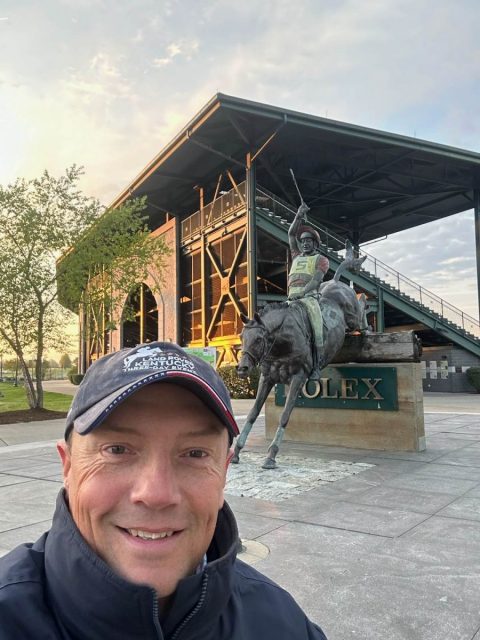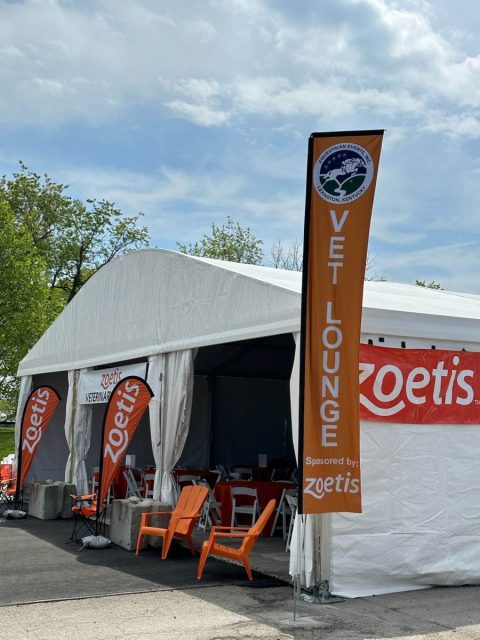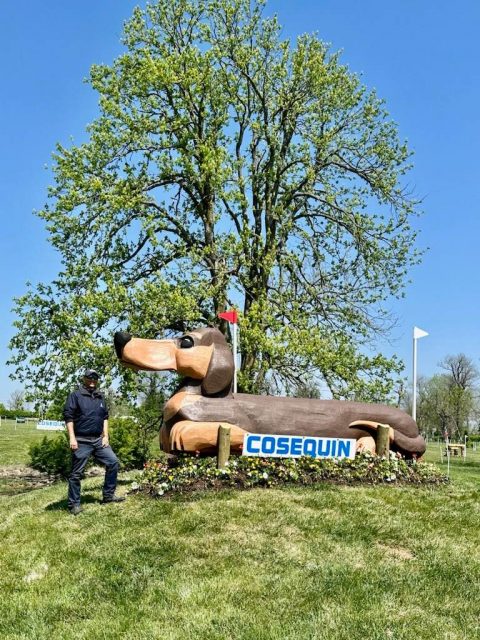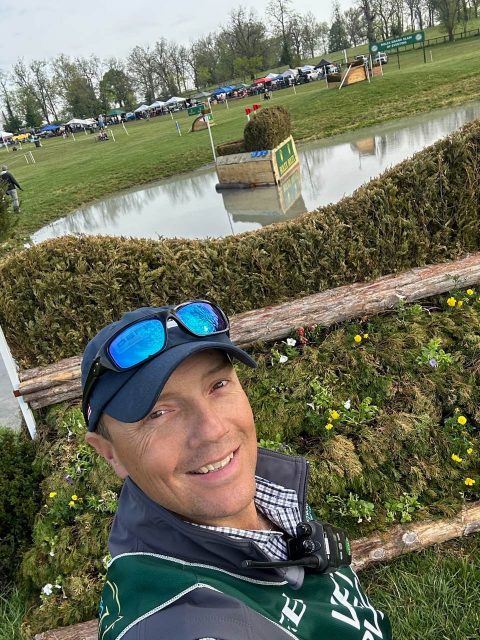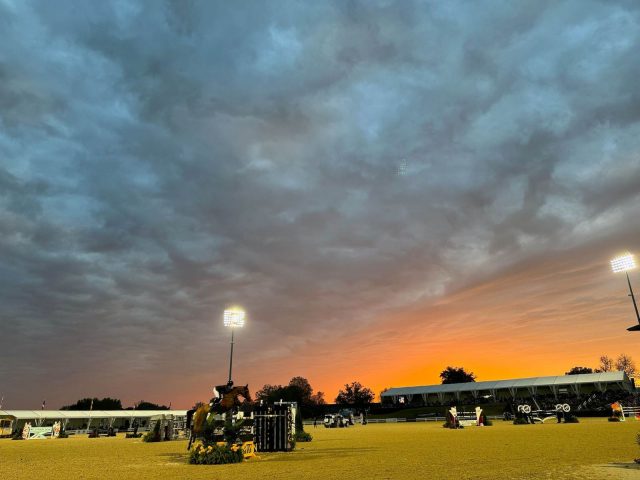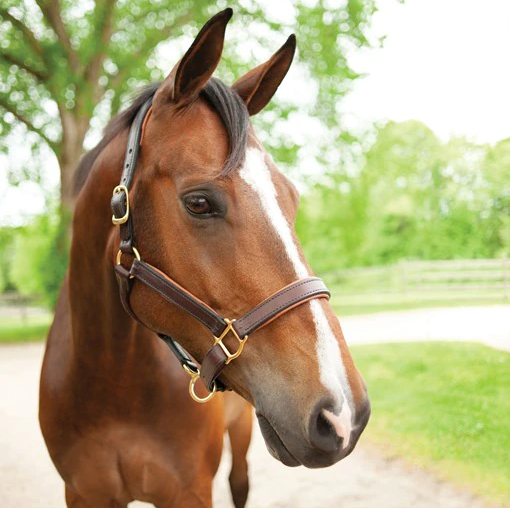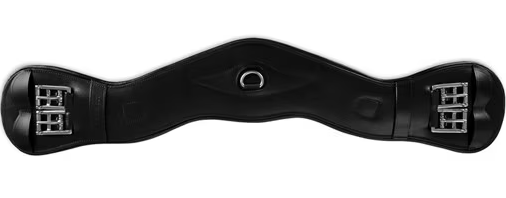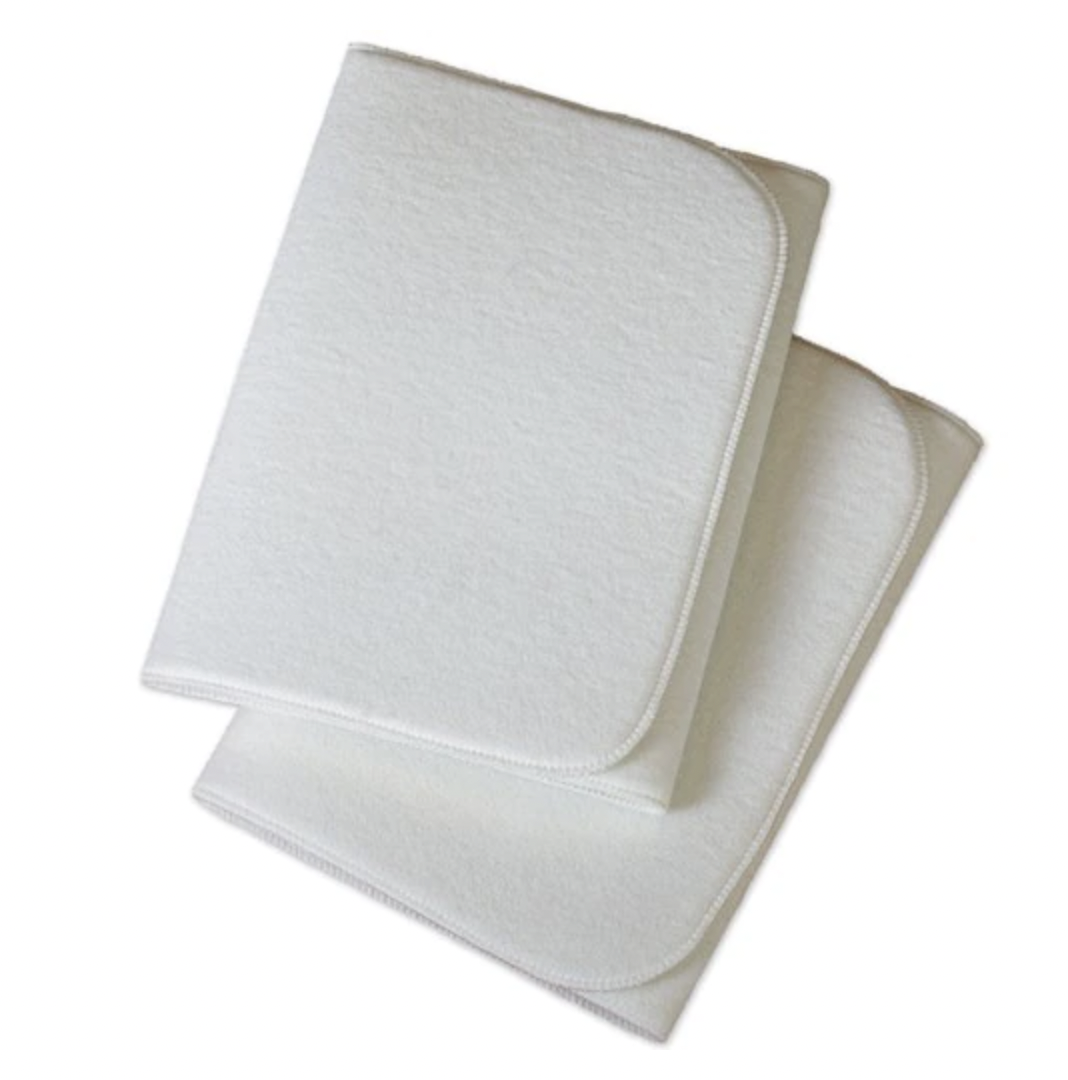
Extended turnout: a one-stop cure-all or something more complex? Photo by Tilly Berendt.
Like many equestrians, I grew up in the hunter/jumper ring — and maybe it was just the barn I rode at, but winter breaks were not a thing. Horses were ridden six days a week, 365 days a year, unless either horse or rider was injured. As I grew up and turned to the world of eventing, though, I started hearing more and more about a ‘winter vacation’ for your horse. The type where you pull shoes, turn them out to pasture, say ‘see ya,’ and come back two months later. The more I learned, the more it seemed to be a pretty controversial practice surrounded by myths and mysteries.
A brief dive into Facebook and online forums found a variety of opinions. (What’s that saying– put ten equestrians in a room and you’ll get eleven opinions? This was the moment in which I saw the truth in that writ large!) Some equestrians claimed that this time off allowed their horses to rest and recover, allowing them to hit the ground running – galloping? – when it came time for show season. Others argued that if you gave a horse this much time off, you’d spend the entire show season just trying to put muscle lost back on.
To get to the bottom of this mystery, I interviewed two different professional riders/trainers, a bodyworker, and a veterinarian. After hours of interviews, the main takeaway I got was that while a vacation will look different for every horse, winter vacations must not become a thing of the past. However, what a vacation looks like has transformed over the years and is moving away from just turning a horse out to pasture and saying ‘see ya later.’
At the end of the day, I learned there are two different types of vacations: the traditionally thought-of winter vacation, which I’ll be calling a stationary vacation, where you turn the horse out, don’t ride it all, and come back in a few months, and an active vacation, where the workload is greatly decreased and the horse is ridden at a walk for an hour or less a few times a week.
Like everything to do with horses, nothing is straightforward and everything depends on the individual horse, rider, and future goals. Let’s dive in.
Carleigh Fedorka, PhD, Professional Rider & Trainer

Carleigh Fedorka. Photo by JJ Sillman
Carleigh Fedorka is a professional eventer who runs a training and competition barn out of Sewickley Stables, but by day she puts her PhD in Veterinary Sciences to good use as an equine researcher. As one would expect of someone who works two full time jobs, she’s exhausted by the end of the day — so when she gives her horses a vacation, the purpose is twofold.
“I’ll be brutally honest, giving my horses time off in the winter has a dual purpose,” she says. “It’s both for them, but also I find myself experiencing extreme burnout. So, I try to help my mental health at the same time as my horse’s.”
As someone more in the pro-stationary vacation camp, the horses in her stable who always get a vacation have a reason for it. Her main upper-level event horse, who is about to be retired, gets every winter off for the sake of his hooves. “His feet have such negative palmer angles that by the end of the show season, my farrier recommends we pull his shoes and help load his frog and get him to regenerate some heel. For him, it’s always been a very clinical reason.”
As the majority of her program is made up of off-the-track thoroughbreds, Carleigh approaches vacations for her young horses with a bit of a different perspective than most eventers. “The [horses] that we get in late winter, early spring, and really get them going throughout the year, they have a pretty tough year, both mentally and physically. I think they enjoy the year and enjoy learning a new job, but by the fall, they have a variety of reasons they need the winter off.”
Whether they need the winter off to finish growing or for other physical reasons, Carleigh also believes in giving the horses a break for mental reasons, as well. “I’m a big believer in letting horses have time just to mentally evaluate what they’ve just gone through. We’re training horses that are growing and so you’re kind of forced to take little breaks throughout the year as they’re building muscle and learning how to develop their bodies.”
Her third reason for giving the majority of her herd a winter vacation is one that every equestrian can relate to: a financial break. Every year Carleigh watches her friends and peers spend the winter in the south so they can show year-round, and she doesn’t know how they do it. “Again, [giving a horse a vacation is] on a case by case basis, but I don’t know how you mentally or financially go year-round. I need the benefits of the financial break of just not having two shows a month, of having the shoes pulled on my horses.”
Carleigh’s perspective on giving both active and stationary vacations is unique in that it encompasses the needs of both horse and rider, which we, as equestrians, don’t do very often. She left me with this very insightful thought: “Even if you’re not taking a complete vacation, just being able to go back to the basics, do some flat work, do some hacking, and go back to remembering why you actually enjoy riding horses is so important.”

Carleigh Fedorka. Photo by JJ Sillman
Ema Klugman, 5* Rider and Trainer

Ema Klugman and RF Redfern at Great Meadow. Photo by Sally Spickard.
Ema Klugman is a 5* eventer who has gone around the Land Rover Kentucky Three Day Event and the Maryland 5* Star at Fair Hill, among other high-profile events. She’s currently a full-time law student, and is also gearing up for a 5* debut this season for her current top ride, Bronte Beach.
Due to the intense demands of her competition schedule, Ema has a slightly different approach to giving vacations than the typically thought-of time-off over the winter months. Instead, she opts to give her horses three to four weeks off after every three-day event.
“If there’s a three-day in early October, they’ll be back in work by the end of November. So, the timing is really based off of when that competition is,” she explains.
She modifies her approach slightly for her younger horses who are not competing at FEI levels. “With the younger ones, part of it is based on my availability and timing. When I’m really focused on getting ready for Kentucky or something like that, those younger horses maybe get a bit of a break or just aren’t in super full work. They’ll just be hacking.”
Ema’s philosophy behind her approach to her young horses is straightforward and, for our purposes, takes more of an active vacation approach. “I don’t think young horses need to be in [full work] for the whole year. I think they probably shouldn’t be in full work for the whole year. I’m planning for my four- and five-year-olds to be in work for nine months out of the year and then they can be in light work for the rest of the time or have time off.”
During their time off, Ema says these young horses can grow and get more comfortable in their bodies — but the easy life doesn’t last forever. By the time her horses are six-years-old, they should “be really properly working within a fitness program.”
When asked if she gave her horses vacations for physical or mental reasons, Ema has a familiar answer for me: it depends on the individual horse. She compares her two horses, Bendigo and Bronte Beach, and states that while both got breaks, each got different benefits out of the break. “[Bendigo’s] breaks, I would say the main benefit of that was that he could mentally relax… He was just allowed to go out and get hairy and be dirty and have a nice time.”
Bronte Beach, on the other hand, doesn’t stress about competition, so her breaks are more for physical reasons. “With the amount of fitness work we do, it’s a lot of strain on their bodies. It’s like any other high performance athlete. For example, marathon runners, I’m sure their bodies don’t feel great when they’re training all the time, right? Having a break relaxes that and lets you sort everything out.”
Like some of the other professionals I spoke with, Ema also categorizes two different types of fitness – cardiovascular and muscle mass. “I certainly see a decrease in cardiovascular fitness [over their vacation]. I don’t think they lose much muscle. I think they lose some definition, but not mass.”
In Ema’s experience, this muscle definition is relatively easy to get back. Ema does vary the amount of time off her horses get based on age, as she notes, “when they get a bit older, if you give them more time off, they can lose muscle.”
Ema puts the most emphasis on bringing the horses back into work slowly and carefully. “I think when you’ve given them three weeks off, you should definitely do at least a week of walking or what I call hacking, where maybe there’s a little bit of a trot and a canter occasionally, but pretty much all walking for 45 minutes to an hour. And then I’d probably only ride them three or four times a week and then gradually start doing more actual work.”
“I don’t pick up the reins where I left off. I really try not to do that, because I think it can be counterproductive, right? Because if the horse is not physically ready to do what you want them to do, then it can be frustrating for the rider because they think, ‘wow, you know, last season I had this all sorted and my horse could do simple changes perfectly. And now they’re not doing it.’ They need a little bit of time to get back into it before you ask them those harder questions.”
Ema does have one winter tradition that she turns to every year: roadwork. Near her farm, Ema has a compacted gravel road that’s perfect for winter fitness. “First when we’re just starting out, we just walk, and then we will trot. It’s this old fashioned thing that I think people used to do because you had to if you didn’t have an indoor arena. But I was taught by my late coach, Packy McGaughan, to do that every winter to “harden up their legs.” So I’ve always done that and I feel like the horses’ legs look really good and are tight coming out of winter.”
Kate Samuels, 4* Rider and Equine Bodyworker

Kate Samuels and Nyls Du Terroir. Photo by Leslie Threlkeld.
Next, I caught up with Kate Samuels, who wears many different hats. She’s a 4* rider, trainer, bodyworker, and a fellow writer for Eventing Nation. Kate spends a lot of time evaluating equine fitness and alleviating issues due to biomechanical imbalances or undiagnosed subclinical lameness, and her take on stationary vacation is that it’s not a cure-all, and may even exacerbate certain issues.
“I think a lot of people think turning your horse out will resolve all of its physical problems,” she says. “They do it because they get to the end of the season and their horse is worn out. They may have some minor injuries they’ve been managing, and they just go, ‘you know what, let’s just chuck it out in the field’. And it probably will help with some things.”
A winter vacation is ideal for the horse who is plain old sore. However, Kate also believes that a sore horse should not be considered ‘normal’ for the end of the show season. “A big misconception is that your horse is sore because he’s worked really hard. But soreness is a marker that your horse hasn’t been prepared for what it’s doing. Soreness shouldn’t be normalized, and if that’s the case, he’ll come back [from vacation] great. But if you turn out a horse who is out chiropractically, they’ll continue to move with poor biomechanics in the field and make the problem worse. When that horse comes back, it’ll now also be really weak and unfit through its core, and you’ll be doubly battling those issues.”
When it comes to fitness and vacation, Kate says the two don’t mix, especially for older horses. “It’s complicated because older horses, I don’t think they do well with vacation physically. After 16, I think it’s significantly harder for them to come back. They do better if they’re kept in light hacking work, just to keep everything loose and limber.”
Kate also makes a point to mention that there are different types of fit horses: a horse who has been doing long slow miles for years, is competing at an upper level, and is generally extremely fit will have a much easier time coming back from vacation. But your average horse who is ridden 30 minutes at a time a few days a week? According to Kate, “That’s not the kind of fitness that is going to support soundness and that is the kind of fitness you lose real quick when you’re going on vacation.”
Beyond the physical repercussions of a stationary vacation, Kate does see the mental benefits of a complete-rest-no-riding vacation. “I think the only time I would consider giving a hardcore vacation, where you pull shoes and everything, is if you have a horse who is fried both mentally and physically.”
As for what she does with her horses, Kate says she doesn’t typically give vacations, but she does take it easy. “I continue working mine, but at a lower level, just because the footing becomes shit. I live on a dirt road, so we do a lot of hacking down the dirt road. And I have a horse that I would love to give a vacation, but every time I do, after two weeks, he does something stupid.”
Dr. Chad Davis of Davis Equine and the Virginia Equine Rehabilitation & Performance Center
Last but not least, I wanted to get the scientific perspective of a veterinarian. Dr. Chad Davis was uniquely qualified for the job, as he runs the Virginia Equine Rehabilitation and Performance Center. While the horses he works with are usually on vacation due to injury, the general principle is the same – he has a lot of experience giving horses significant amounts of time off, gauging what’s best for their fitness and competition record, and how to bring them back into work successfully.
Dr. Chad grew up on the West Coast and remembers giving horses downtime every year. “Nowadays, depending on the discipline, but for most disciplines, you can compete your horse year-round,” he says. “When I was growing up, I remember we had the late fall early winter as programmed downtime for the horses.”
As for which method of horse care is better – year-round work or winter downtime – Dr. Chad remarks that these vacations aren’t just for physical reasons, but for mental ones too. “There is a need, aside from the physical side of it, but also from the mental side, that the horses get a letdown period.”
But as far as the old-fashioned method of turning them out for 2 months and walking away, Dr. Chad says that’s not what he tells his clients. “The typical advice we’ll give will be less than 45 days, generally, active rest, so a lot more going out on hacks, more than anything else. Not necessarily being put on the lunge line, but getting a horse out just moving his body around, and more turnout time if possible. If we have a nice healthy horse that’s doing some sort of disciplined sport, a nice two weeks of downtime is ideal. And then if you require more because your horse has a tendency to be more muscle sore, you may extend that time but it’s going to be that active rest versus stationary rest.”
This active rest has big benefits as compared to stationary rest. According to Dr. Chad, “Active rest is a sure way to avoid early season injuries.”
Injuries aside, it’s also a great way to ensure your horse doesn’t lose all that precious fitness they gained over the last competition season. “There was a paper from a long time ago when I was an undergrad. For about two weeks of non-strenuous activity, 10% of the horse’s aerobic max capacity is lost and has to be regained, but it takes twice as long to regain it.”
Dr. Chad approaches rehabilitation, either from an injury or from an intense show season, very scientifically. “You can use things like heart rate and lactate measurements to give you an idea where your horses are at from a fatigue standpoint. I’ve seen some horses that are chronically fatigued from showing and they’ll have lower hypnotic rates. They’re slightly anemic because essentially they have just been under an abnormal amount of stress. Chronic stress will lead to some anemias in some horses as well.”
In terms of what you should look for when deciding whether or not to give your horse a vacation, Dr. Chad says to evaluate how well they come back into work. “If you take horses on an individual basis, you have a better ability to say ‘that horse does not do well, mentally and/or physically, coming back into work.’ Some horses, especially when they’re on the younger side, come out of whatever rest period, let’s say somewhere between two weeks and 45 days, they come right back to it, real quick.”
To Vacation or Not to Vacation? More Like How

Leo also enjoying some snow. Photo by Kate Samuels.
The question isn’t so much whether or not to give your horse a vacation, but how to give your horse a vacation.
Almost everyone I spoke to was for giving their horses some type of vacation. However, what this downtime looked like was different for every person and for every horse in their program. Whether the downtime was in the summer, the winter, or right after big events, every rider had their own style of what a “winter vacation” looked like. And, guess what? Everyone said their methods worked well for their programs.
So, while there may be no wrong way to give a horse a vacation – except in failing to give one at all – there were a few key takeaways that may help you optimize your horse’s downtime so you and he can get the most out of it.
- How you re-introduce work is just as important, if not more important, as giving a vacation.
- Long, slow miles are key to a sound horse. This is why hacking or active rest was recommended over and over as a great alternative to just stationary rest.
- What a vacation looks like should be tailored for each individual horse’s personality and physical and mental needs. Whether you give your horse a few weeks off after a big event, or you just take it down a few notches and spend the winter hacking, what you decide to do depends on your individual horse.
- The multi-month long vacation may be a bit outdated. Instead, consider giving your horse a vacation between two weeks and 45 days.
- Vacations aren’t just for physical reasons– they offer mental rest for both horse and rider.
As for what I personally would do with my horse after talking to all of these well-qualified horse people, I’d follow these bullet points:
Older horses? No stationary vacation, but decreased workload and active rest.
Massive intense event? Vacation followed by active rest.
Mentally fried horse? Vacation.
Mentally fried rider? Vacation.
Average eventer? Spend the winter varying the workload with lots of long, slow miles. Treat ‘vacation’ almost like rehabbing from an injury, in terms of basic principles. Focus on relaxation and building that long, slow core fitness by hacking on roads, doing lots of walking, and, if you’re lucky enough to have access to it, spend some time on an aqua treadmill or swimming your horse.





















